|
 |
|
 |
|
"Cayman Kai
Vacations" chosen best Privately Owned Properties |
|
"NEW"
Translate any page on this web site with Microsoft
Translator at the bottom of each page.
|
- "85
Degrees"
- Average
Temperature
- "82
Degrees"
- Average
Water Temperature
- "7"
- Average
number of spectacular sunsets at Rum Point Beach in a
week
-
Cayman Kai Vacations is


|
"Click on area of interest
below"





.htm_cmp_rmnsque100_vbtn.gif)


















































.htm_cmp_rmnsque100_vbtn.gif)















| |
"Cayman Kai Vacations"
offering in Cayman Kai/Rum Point and the North Side of Grand Cayman,
Cayman Islands
|
-
Specializing in offering the
- Island Houses
of Cayman Kai
-
Vacation Rentals, Rental Management, & Investment Properties
- in the Cayman Kai/Rum
Point Grand Cayman, Cayman Islands
|
-
Specializing in offering
- Villa's,
Condominiums
-
Vacation Rentals, Rental Management & Investment Properties
- in
the Cayman Kai/Rum Point & North Side area Grand Cayman, Cayman
Islands
|
- click on to print page

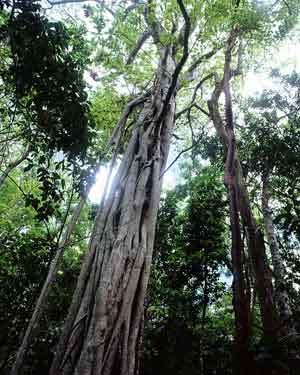 At first glance,
it's just the start of another day in paradise. The sun
rises brilliantly, the breeze rustles through the fronds of
silver thatch palms, and a flock of Grand Cayman parrots
alight on a mango tree. A green turtle slides off to sea,
skimming over the reefs, after depositing her eggs in the
sand. The white and purple petals of a wild banana orchid
flutter from their perch on a Mastic Trail mahogany tree,
and a clutch of baby blue iguana scuttle into the
underbrush, ready for anything. At first glance,
it's just the start of another day in paradise. The sun
rises brilliantly, the breeze rustles through the fronds of
silver thatch palms, and a flock of Grand Cayman parrots
alight on a mango tree. A green turtle slides off to sea,
skimming over the reefs, after depositing her eggs in the
sand. The white and purple petals of a wild banana orchid
flutter from their perch on a Mastic Trail mahogany tree,
and a clutch of baby blue iguana scuttle into the
underbrush, ready for anything.
At
second glance, such seemingly casual occurrences are
actually hard-won victories. Were it not for the efforts of
an army of volunteers, bolstered by two decades of
far-sighted legislation and a government committed to
education and preservation, the Cayman Islands might be
"just another pretty face" of beaches and hotels-minus the
endowments that make them one-of-a-kind in natural history
and heritage. The Caymanian love of nature, coupled with
inherent sensibility and economic vision, has caused the
Cayman Islands to lead the way in establishing policy for
eco-tourism development.
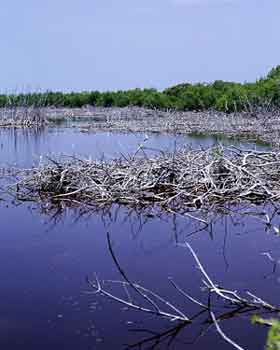 Caymanians
have embraced every aspect of what is referred to as Nature
Tourism, saving more than their water, land and the
creatures that inhabit both. They are saving their heritage,
as evidenced in social, agricultural, and architectural
markers of the past. It is an undertaking of major
proportion, but Caymanians know it is their lifeline to the
future. Caymanians
have embraced every aspect of what is referred to as Nature
Tourism, saving more than their water, land and the
creatures that inhabit both. They are saving their heritage,
as evidenced in social, agricultural, and architectural
markers of the past. It is an undertaking of major
proportion, but Caymanians know it is their lifeline to the
future.
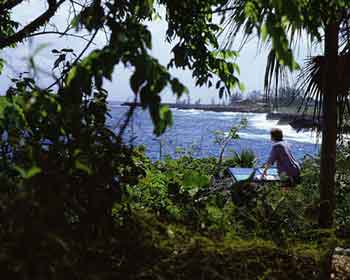 With
such deliberate and thoughtful infrastructure in place, the
government and private sector, knowing that visitors must
become aware of the laws before they can be expected to obey
them, have worked together to make this information readily
available. Members of the Cayman Islands Tourism Association
(CITA), Cayman National Water sports Association (CNWA) and
the Sister Islands Tourism Association (SITA) have all
worked to educate thousands of visiting divers each year by
briefing them about local marine park laws; enforcing a
'look but don't touch' policy toward marine life; and using
only dive sites marked by permanent boat moorings to prevent
anchor damage to fragile coral eco-systems. Members of these
Associations take a pro-active approach by trying to prevent
any form of diver or snorkeller damage and by encouraging
divers to practice good buoyancy skills, that alleviate
collision with fragile coral. With
such deliberate and thoughtful infrastructure in place, the
government and private sector, knowing that visitors must
become aware of the laws before they can be expected to obey
them, have worked together to make this information readily
available. Members of the Cayman Islands Tourism Association
(CITA), Cayman National Water sports Association (CNWA) and
the Sister Islands Tourism Association (SITA) have all
worked to educate thousands of visiting divers each year by
briefing them about local marine park laws; enforcing a
'look but don't touch' policy toward marine life; and using
only dive sites marked by permanent boat moorings to prevent
anchor damage to fragile coral eco-systems. Members of these
Associations take a pro-active approach by trying to prevent
any form of diver or snorkeller damage and by encouraging
divers to practice good buoyancy skills, that alleviate
collision with fragile coral.
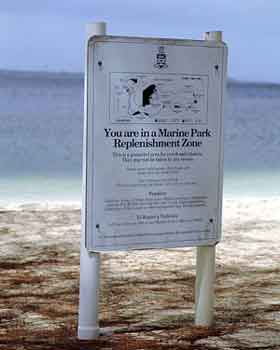 Strict
standards of safety and dedication to conservation are the
two greatest characteristics of carrying out Nature Tourism
in the Cayman Islands. Around the three islands, designated
Marine Park Zones are clearly marked, and laws are listed on
government posted signs in public waterfront access areas at
beaches and boat launches. Detailed maps showing various
park zones and park regulations are featured in a general
information brochure, "Things Every Visitor Should Know
About Our Conservation Laws and Our Marine Parks." The
brochures are widely distributed by the Department of
Tourism, Government Information Services, and Department of
Environment's Natural Resources Unit. All dive and
watersports operators also distribute this brochure. In
addition, information is reprinted in many local tourist
publications and on island maps available free to guests. Strict
standards of safety and dedication to conservation are the
two greatest characteristics of carrying out Nature Tourism
in the Cayman Islands. Around the three islands, designated
Marine Park Zones are clearly marked, and laws are listed on
government posted signs in public waterfront access areas at
beaches and boat launches. Detailed maps showing various
park zones and park regulations are featured in a general
information brochure, "Things Every Visitor Should Know
About Our Conservation Laws and Our Marine Parks." The
brochures are widely distributed by the Department of
Tourism, Government Information Services, and Department of
Environment's Natural Resources Unit. All dive and
watersports operators also distribute this brochure. In
addition, information is reprinted in many local tourist
publications and on island maps available free to guests.
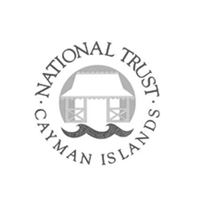 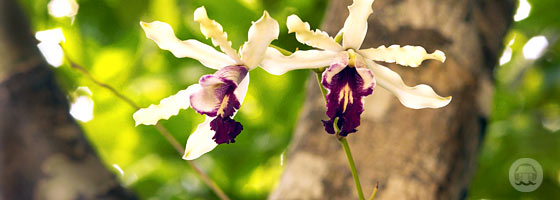
The National Trust
The National Trust for the Cayman Islands Law of 1987
created the National Trust as a non-profit, statutory body
which is "responsible for the preservation of Cayman's
historic, natural and maritime heritage; the conservation of
lands, natural features and submarine areas of beauty,
historic or environmental importance, and the protection of
our native flora and fauna".

It's primary responsibilities are:
Preserving the natural, historic and maritime
heritage of the Cayman Islands through preservation of
areas, sites, buildings, structures and objects of
historic or cultural significance;
Conservation of lands, natural features and
submarine areas of beauty, historic or environmental
importance, acquirable through gift, bequest, lease,
purchase or other means; and
The protection of flora and fauna.
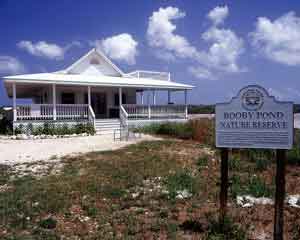 The Trust's activities include protecting biological
diversity; protecting public access both visual and
physical-to the sea; protecting selected traditional
footpaths throughout the islands such as the Mastic Trail;
acquiring and maintaining structures of outstanding
historical or cultural significance for which ongoing
funding is assured, and facilitating the preservation of
historic and cultural sites. For more information on the
National Trust or to contact them visit:
www.caymannationaltrust.org
The Trust's activities include protecting biological
diversity; protecting public access both visual and
physical-to the sea; protecting selected traditional
footpaths throughout the islands such as the Mastic Trail;
acquiring and maintaining structures of outstanding
historical or cultural significance for which ongoing
funding is assured, and facilitating the preservation of
historic and cultural sites. For more information on the
National Trust or to contact them visit:
www.caymannationaltrust.org
Mastic Trail
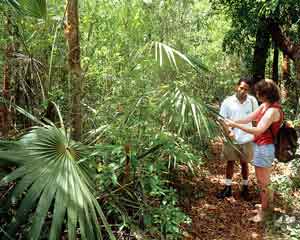 Protected
by the National Trust, the Mastic Reserve on Grand Cayman is
the largest contiguous area of untouched, old growth dry
forest remaining on the island. This area and other similar
expanses of forest in Cayman are of international
significance, as they are among the last remaining examples
of the Caribbean's dry, subtropical forest. Which was the
target of particularly intense deforestation throughout the
West Indies. The area is home to a wide variety of animals
and plants unique to the Cayman Islands, and also to large
populations of trees which have vanished from more
accessible places through logging in the eighteenth and
nineteenth centuries. The Mastic Trail is part of an old
trail whose origins were lost in time, but we do know that
at least 100 years ago William Steven Watler and his
contemporaries completed a causeway of mahogany logs and
beach rocks to assist passage across a deep mangrove wetland
at the southern end of the trail. For a while the trail was
a major thoroughfare, but later as the coastal roads and the
modern Frank Sound Road were established and upgraded, the
trail fell into disuse and became overgrown. Protected
by the National Trust, the Mastic Reserve on Grand Cayman is
the largest contiguous area of untouched, old growth dry
forest remaining on the island. This area and other similar
expanses of forest in Cayman are of international
significance, as they are among the last remaining examples
of the Caribbean's dry, subtropical forest. Which was the
target of particularly intense deforestation throughout the
West Indies. The area is home to a wide variety of animals
and plants unique to the Cayman Islands, and also to large
populations of trees which have vanished from more
accessible places through logging in the eighteenth and
nineteenth centuries. The Mastic Trail is part of an old
trail whose origins were lost in time, but we do know that
at least 100 years ago William Steven Watler and his
contemporaries completed a causeway of mahogany logs and
beach rocks to assist passage across a deep mangrove wetland
at the southern end of the trail. For a while the trail was
a major thoroughfare, but later as the coastal roads and the
modern Frank Sound Road were established and upgraded, the
trail fell into disuse and became overgrown.
The Mastic Trail is two miles long and the guided walk takes
approximately two and a half to three hours. Walkers get the
chance to experience a fascinating exploration deep into
Cayman's wild interior, in an area where the woodland has
been evolving undisturbed for the last two million years.
Special tours for small school groups and other local
organizations are also available by prior arrangement. The
Trust received worldwide public recognition in 1995, when
Islands magazine chose the Mastic Trial as a finalist in
their annual Ecotourism Award competition.
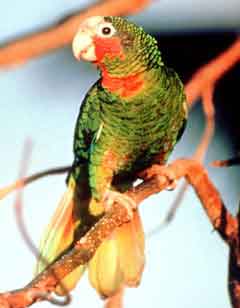 The endangered Cayman parrot, that has a
population of only 350. Wetland ponds harbor a wide
selection of herons and shorebirds, including the rare West
Indian whistling-duck.
The endangered Cayman parrot, that has a
population of only 350. Wetland ponds harbor a wide
selection of herons and shorebirds, including the rare West
Indian whistling-duck.
For more great information on Nature Tourism in the Cayman
Islands visit:
www.naturecayman.com
|
|
Just send
me a Email or give me a Call!
-
 -
Cayman Kai Vacations
Specializing in
offering-
"The Island Houses
of Cayman Kai",
-
Villas & Condominiums
-
Vacation Rentals, Rental Management & Investment Properties
- in
the Cayman Kai/Rum Point & North Side area Grand Cayman, Cayman
Islands
 - Click on to print page
-
-
Click on to return to
-
Copyright ©
2004-2020
Cayman Kai
Vacations
All Rights Reserved
Note that Copyright applies to the entirety
of the content of this web site.
Site Design & Maintenance by
Web Master -
Cayman Kai
Vacations
This
site was last updates:
02/18/20 11:01 PM
Caribbean Vacation Grand Cayman
Island Houses Rentals, Cayman Kai, Rum Point, Grand Cayman, Cayman
Islands
|











.htm_cmp_rmnsque100_vbtn.gif)


















































.htm_cmp_rmnsque100_vbtn.gif)
















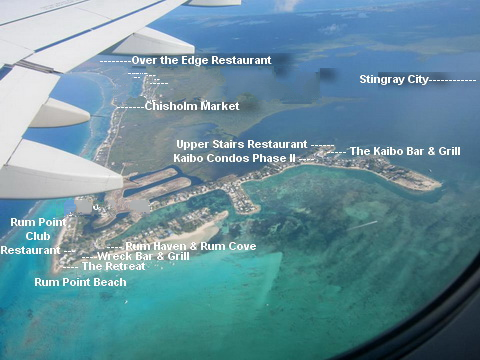
 At first glance,
it's just the start of another day in paradise. The sun
rises brilliantly, the breeze rustles through the fronds of
silver thatch palms, and a flock of Grand Cayman parrots
alight on a mango tree. A green turtle slides off to sea,
skimming over the reefs, after depositing her eggs in the
sand. The white and purple petals of a wild banana orchid
flutter from their perch on a Mastic Trail mahogany tree,
and a clutch of baby blue iguana scuttle into the
underbrush, ready for anything.
At first glance,
it's just the start of another day in paradise. The sun
rises brilliantly, the breeze rustles through the fronds of
silver thatch palms, and a flock of Grand Cayman parrots
alight on a mango tree. A green turtle slides off to sea,
skimming over the reefs, after depositing her eggs in the
sand. The white and purple petals of a wild banana orchid
flutter from their perch on a Mastic Trail mahogany tree,
and a clutch of baby blue iguana scuttle into the
underbrush, ready for anything.
 Caymanians
have embraced every aspect of what is referred to as Nature
Tourism, saving more than their water, land and the
creatures that inhabit both. They are saving their heritage,
as evidenced in social, agricultural, and architectural
markers of the past. It is an undertaking of major
proportion, but Caymanians know it is their lifeline to the
future.
Caymanians
have embraced every aspect of what is referred to as Nature
Tourism, saving more than their water, land and the
creatures that inhabit both. They are saving their heritage,
as evidenced in social, agricultural, and architectural
markers of the past. It is an undertaking of major
proportion, but Caymanians know it is their lifeline to the
future.  With
such deliberate and thoughtful infrastructure in place, the
government and private sector, knowing that visitors must
become aware of the laws before they can be expected to obey
them, have worked together to make this information readily
available. Members of the Cayman Islands Tourism Association
(CITA), Cayman National Water sports Association (CNWA) and
the Sister Islands Tourism Association (SITA) have all
worked to educate thousands of visiting divers each year by
briefing them about local marine park laws; enforcing a
'look but don't touch' policy toward marine life; and using
only dive sites marked by permanent boat moorings to prevent
anchor damage to fragile coral eco-systems. Members of these
Associations take a pro-active approach by trying to prevent
any form of diver or snorkeller damage and by encouraging
divers to practice good buoyancy skills, that alleviate
collision with fragile coral.
With
such deliberate and thoughtful infrastructure in place, the
government and private sector, knowing that visitors must
become aware of the laws before they can be expected to obey
them, have worked together to make this information readily
available. Members of the Cayman Islands Tourism Association
(CITA), Cayman National Water sports Association (CNWA) and
the Sister Islands Tourism Association (SITA) have all
worked to educate thousands of visiting divers each year by
briefing them about local marine park laws; enforcing a
'look but don't touch' policy toward marine life; and using
only dive sites marked by permanent boat moorings to prevent
anchor damage to fragile coral eco-systems. Members of these
Associations take a pro-active approach by trying to prevent
any form of diver or snorkeller damage and by encouraging
divers to practice good buoyancy skills, that alleviate
collision with fragile coral.  Strict
standards of safety and dedication to conservation are the
two greatest characteristics of carrying out Nature Tourism
in the Cayman Islands. Around the three islands, designated
Marine Park Zones are clearly marked, and laws are listed on
government posted signs in public waterfront access areas at
beaches and boat launches. Detailed maps showing various
park zones and park regulations are featured in a general
information brochure, "Things Every Visitor Should Know
About Our Conservation Laws and Our Marine Parks." The
brochures are widely distributed by the Department of
Tourism, Government Information Services, and Department of
Environment's Natural Resources Unit. All dive and
watersports operators also distribute this brochure. In
addition, information is reprinted in many local tourist
publications and on island maps available free to guests.
Strict
standards of safety and dedication to conservation are the
two greatest characteristics of carrying out Nature Tourism
in the Cayman Islands. Around the three islands, designated
Marine Park Zones are clearly marked, and laws are listed on
government posted signs in public waterfront access areas at
beaches and boat launches. Detailed maps showing various
park zones and park regulations are featured in a general
information brochure, "Things Every Visitor Should Know
About Our Conservation Laws and Our Marine Parks." The
brochures are widely distributed by the Department of
Tourism, Government Information Services, and Department of
Environment's Natural Resources Unit. All dive and
watersports operators also distribute this brochure. In
addition, information is reprinted in many local tourist
publications and on island maps available free to guests.



 The Trust's activities include protecting biological
diversity; protecting public access both visual and
physical-to the sea; protecting selected traditional
footpaths throughout the islands such as the Mastic Trail;
acquiring and maintaining structures of outstanding
historical or cultural significance for which ongoing
funding is assured, and facilitating the preservation of
historic and cultural sites. For more information on the
National Trust or to contact them visit:
The Trust's activities include protecting biological
diversity; protecting public access both visual and
physical-to the sea; protecting selected traditional
footpaths throughout the islands such as the Mastic Trail;
acquiring and maintaining structures of outstanding
historical or cultural significance for which ongoing
funding is assured, and facilitating the preservation of
historic and cultural sites. For more information on the
National Trust or to contact them visit:
 Protected
by the National Trust, the Mastic Reserve on Grand Cayman is
the largest contiguous area of untouched, old growth dry
forest remaining on the island. This area and other similar
expanses of forest in Cayman are of international
significance, as they are among the last remaining examples
of the Caribbean's dry, subtropical forest. Which was the
target of particularly intense deforestation throughout the
West Indies. The area is home to a wide variety of animals
and plants unique to the Cayman Islands, and also to large
populations of trees which have vanished from more
accessible places through logging in the eighteenth and
nineteenth centuries. The Mastic Trail is part of an old
trail whose origins were lost in time, but we do know that
at least 100 years ago William Steven Watler and his
contemporaries completed a causeway of mahogany logs and
beach rocks to assist passage across a deep mangrove wetland
at the southern end of the trail. For a while the trail was
a major thoroughfare, but later as the coastal roads and the
modern Frank Sound Road were established and upgraded, the
trail fell into disuse and became overgrown.
Protected
by the National Trust, the Mastic Reserve on Grand Cayman is
the largest contiguous area of untouched, old growth dry
forest remaining on the island. This area and other similar
expanses of forest in Cayman are of international
significance, as they are among the last remaining examples
of the Caribbean's dry, subtropical forest. Which was the
target of particularly intense deforestation throughout the
West Indies. The area is home to a wide variety of animals
and plants unique to the Cayman Islands, and also to large
populations of trees which have vanished from more
accessible places through logging in the eighteenth and
nineteenth centuries. The Mastic Trail is part of an old
trail whose origins were lost in time, but we do know that
at least 100 years ago William Steven Watler and his
contemporaries completed a causeway of mahogany logs and
beach rocks to assist passage across a deep mangrove wetland
at the southern end of the trail. For a while the trail was
a major thoroughfare, but later as the coastal roads and the
modern Frank Sound Road were established and upgraded, the
trail fell into disuse and became overgrown.  The endangered Cayman parrot, that has a
population of only 350. Wetland ponds harbor a wide
selection of herons and shorebirds, including the rare West
Indian whistling-duck.
The endangered Cayman parrot, that has a
population of only 350. Wetland ponds harbor a wide
selection of herons and shorebirds, including the rare West
Indian whistling-duck. 
